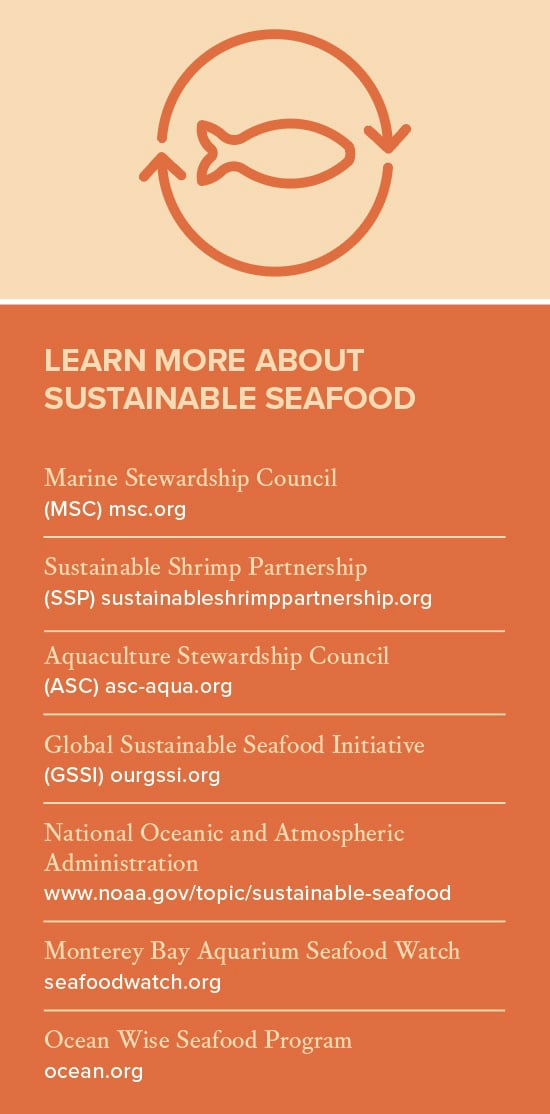How to choose foods from the deep blue that balance nutrition and planetary health
Fact checked by Shannon Sparks
Seafood — also called blue food — comes from the oceans, rivers, and lakes. These foods include fish, shellfish, and seaweed.
Blue foods are high on the list of foods that Americans should be eating for cardiovascular, cognitive, and eye health. The United States’ current Dietary Guidelines for Americans and the American Heart Association recommend at least two servings of seafood per week for adults, amounting to between 6 oz. and 10 oz.
And options abound: Seafood is abundant and diverse, with 2,200 wild species and 600 farmed species of aquatic life. The industry also contributes to the global economy, with 800 million people employed in the seafood trade worldwide.
Today, 3.2 billion people get at least 20% of their animal protein from fish. But with so much seafood on dinner plates, who makes sure we’re keeping a sustainable seafood supply? And how do they do it?
Keeping seafood in the sea
Compared to other food sources, the vast nutrition resources that the world’s waterways supply is virtually untapped — as the oceans cover 70% of our planet but only provide 5% of our food.

A variety of U.S. organizations oversee wild-capture and farm-raised fisheries to fend off overfishing.
“Sustainable seafood is caught in a way that protects the marine environment and the fish living in it to ensure it can thrive now and in the future. It minimizes the impact on habitats and ecosystems,” says Maggie Michalczyk, a Chicago-based dietitian. Its ubiquity may contribute to alleviating food shortages around the world; the United Nations’ Blue Transformation — an initiative to promote the potential of the oceans in combating global food insecurity, may be a promising part of the solution.
The carbon footprint of wild-capture fishing is much smaller than land animal farming. Fish farming produces minimal carbon dioxide and takes up almost no land or fresh water.
With ocean conditions constantly changing, managing sustainable fisheries is a dynamic process geared toward the latest science. If a species is overfished, checks and balances kick in, such as restricting harvest levels to rebuild stock and keep responsible fishermen on the water and fishing communities at work.
Understanding sustainable seafood options
“You’ll often hear registered dietitians recommend salmon for its strong omega-3 fat profile, but we don’t often talk about the source of that salmon,” Burning says. According to seafoodwatch.org, salmon farmed in New Zealand or wild-caught from California, Oregon, and Washington are better choices for the environment than farmed varieties from Canada, Chile, Norway, or Scotland.
Why? New Zealand, California, Oregon, and Washington have been shown to protect nearby habitats and not introduce non-native species, as well as to reduce bycatch (sealife accidentally trapped in lines or nets). They limit pollution, chemicals, and the use of antibiotics. They also support fair and safe working conditions for seafood industry workers.
“I encourage my clients to look for wild-caught seafood options when possible,” Michalczyk says. One way to do this is by looking for the Marine Stewardship Council (MSC) blue fish label, which ensures it is certified sustainable seafood and comes from a fishery that is following sustainable practices.”
Let’s face it: We rely on the oceans for food, and it’s our duty to take care of the oceans and keep sea life thriving. Bruning says, “After decades of overfishing, and the ecological imbalances that creates, we’re finally making strides to balance out human needs with aquatic needs.”
Originally published in the Fall 2024/Winter 2025 print issue.

Vicki is a registered dietitian nutritionist, lifestyle nutrition expert, writer, culinary and media consultant and author of two books.











